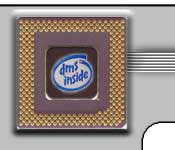|
Sensor Technologies for Monitoring Metabolic Activity in Single Cells,
Part 2: Non-Optical Methods and Applications
Rachel Yotter, Linda Lee, and Denise Wilson

A review of solid-state chemical and electrochemical sensors to detect metabolic activity at the extracellular, single-cell level is presented in the
context of development of Life-on-a-Chip research instrumentation. Metabolic processes in cells are briefly reviewed with the goal of quantifying the
role of metabolites within the cell. Sensors reviewed include both research and commercial devices that can non-invasively detect extracellular
metabolites including oxygen, carbon dioxide, and glucose. Metabolic activity can also be sensed non-selectively by measuring pH gradients. Performance
metrics such as sensitivity, sensor size, drift, time response, and sensing range are included when available.
Highly suitable sensor technologies to monitoring cellular metabolic activity include electrochemical sensors, scanning electrochemical microscopy
(SECM), ion-sensitive field effect transistor (ISFET) sensors, and solid-state light-addressable potentiometric sensors (LAPS). Other less-suitable but
still potentially viable solid-state sensing technologies are also reviewed, briefly, including resonant chemical sensors (surface acoustic wave,
quartz crystal microbalance), conductivity or impedance sensors, and sensors with multiple transduction stages. Specific biological applications which
benefit from detection of extracellular metabolic events at the single-cell level are discussed to provide context to the practical use of these sensor
technologies; these applications include case studies of various diseases (cancer, diabetes, mitochondrial disorders), cell and tissue differentiation;
cell and tissue storage; cell life cycle and basic cellular processes; and developmental biology. |



